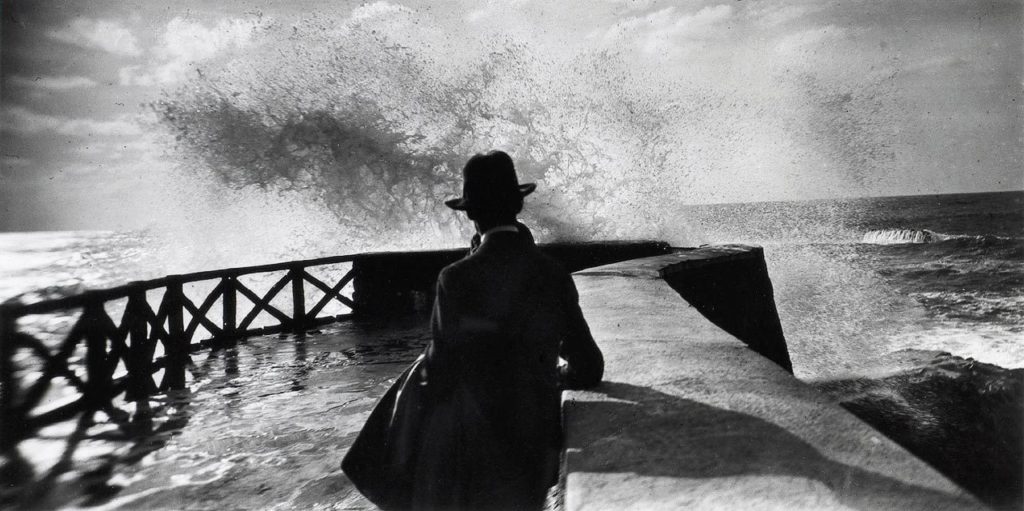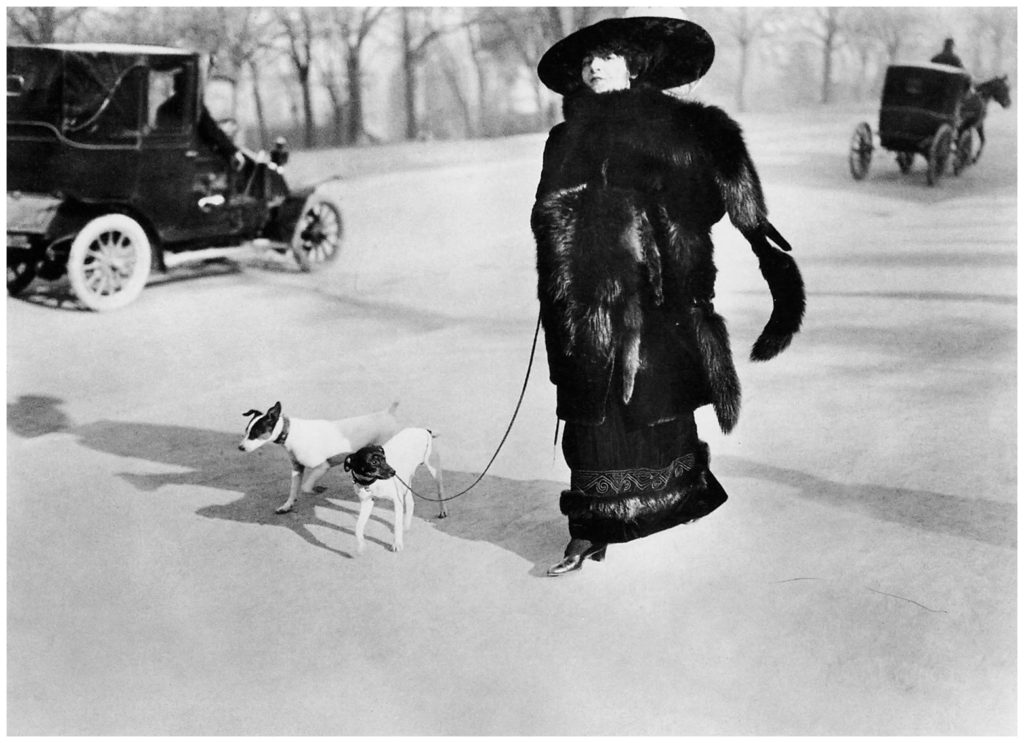
I’ve always had a soft spot for Jacques-Henri Lartigue’s amateur photographic work. For me, his childhood output constitutes one of the highlights of early 20th-century photography. Born in Courbevoie, near Paris in France in 1894, Lartigue took his first photographs at age 8. For him, photography was a revelation that would inspire him throughout his life: “It was a superhuman invention. I got it all! Colors! The sounds!”

Lartigue’s early vision – private memory as photographic subject – constitutes an authentic autobiographical diary of his family life in pre-WW1 France. His images are of an affectionate and happy family environment: parents, brother Zissou, grandfather Alfred (who was one of the inventors of the monorail system and also a playwright), uncles, aunts, cousins all handsome and well dressed. From the images we know that the Lartigues were well off socially – we are shown nannies, chauffeurs, loved pets.
As he became more familiar with his camera, Lartigue’s subjects and frames changed to reflect the moment: his subjects became car races in Auvergne, the bathers in Deauville and Biarritz, airplanes in Issy-les-Moulineaux and Buc, winter pastimes in Switzerland.

Grand Prix de l’ACF, Delage automobile, Dieppe Circuit 26 June 1912
In 1915 Lartique attended the Académie Jullian to study painting, which would become his lifelong profession. Photography, however, remained his great love. The expressive knowledge he learned via painting – but also his use of the various cameras over the years, in particular their technical limits – were the means he used to create his unique photographic style. Lartigue’s vision is of the Belle Époque, the bliss of happiness of French life before the First World War, an era also characterized by the Impressionists who painted in parallel with the innovation of the photographic medium. It was an aesthetic that gave a privileged view of bourgeois life in France in the early 1900s.

Véra et Arlette, Cannes, May 1927
*************

It was only in the 1960s, when he was almost 70, that his larger photographic archive became known to the general public via an exhibition held at the Museum of Modern Art in New York in 1963 entitled “The Photographs of Jacque Henri Lartigue” curated by John Szarkowski, director of the Museum’s Department of Photography. Lartigue was “discovered” as if he were a child who had miraculously captured a passing world while documenting the beginnings of the new. It wasn’t a large show, 45 early photographs from the very beginning of Lartigue’s career, now iconic. Szarkowski described Lartigue’s photography as “the precursor of every interesting and lively creation made during the twentieth century”. Richard Avedon, after viewing Lartigue’s work at the MoMA in 1963 wrote to him that “It was one of the most moving and powerful experiences of my life. They are photographs that echo. I will never forget them. Seeing them was for me like reading Proust for the first time ”.
Lartigue remained no mere naive kid with a camera. If the 1963 MoMA photos are beautiful evocations of a lost world, the photographs that Lartigue took in the six decades of his working life constitute his enduring legacy. Kevin Moore’s monograph, Jacques Henri Lartigue: The Invention of an Artist (2004), argues for the sophistication and enduring quality of Lartigue’s mature work. According to Moore, Lartigue, with his ability to freeze the enduring moment in time, made the snapshot a work of art. That he did is a measure of his enduring worth as a photographer.
*************

In 1974, French president Valéry Giscard d’Estaing commissioned Lartigue to produce his official portrait. In 1975 the Muséè des arts Décoratifs in Paris presented a large review of his photography, ‘Lartigue 8 x 80’, and in 1980 the Grand Palais in Paris exhibited a retrospective entitled ‘Bonjour Monsieur Lartigue‘ .
In 1979 Lartigue donated his entire work – negatives, original albums, diaries, cameras – to the French government which established the Association des Amis de Jacques Henri Lartigue, today called Donation Jacques Henri Lartigue, with the supervision of the Ministry of Culture. The function of the Donation is to promote Lartigue’s work.
Jacques-Henri Lartigue continued to photograph, paint and write until his death in September 1986, at the age of 92. He left over 100,000 photographs, 7,000 diary pages and 1,500 paintings.


In the pic of the two girls clambering over the rocks, the one on the left is kinda Twiggyish; you don’t think…
The guy was a natural, which is what I’ve always believed: you can’t teach people photography, only how to work photographic machinery.
After viewing this selection of his photos, all I can say is: Thank god he shot with a Barnack Leica.
Gives me hope…
He took his first picture at the tender age of 8, that place it in 1902 so predating barnack camera. He used all kind of plate camera from his era and ultimately barnack camera among others.
I remember reading a page dedicated to him in the book ´la photo’ from jean loup sieff and chenz. A kind of proust questionnaire for renowned french photographer of the late seventies. At the question what would you do if you won the million jack pot he answered, buy myself an instamatic and get paid a lot to take pictures. A keen eye in all senses., maybe like the young drummer boy in the gunther grass book he never grew up, always taking pictures from an 8 year old boy perspective.
Jeanloup Sieff is one of my favourite photographers; (his daughter is also a photographer; what a start!) and I have his large Taschen publication titled simply Jeanloup Sieff. It was his last book, published just after his death. His writings, here in Italian, Spanish and Portuguese are wonderfully acerbic on the matter of art photography circles and curators etc, despite the many shows that he had had.
Looking back at his work and that of Frank Horvat, one has to smile at the glory give the 60’s London photographic tribe: nuttin’ new.
He was extraordinarily talented. A rare ability in both colour and black and white (I can’t think of anyone else who was as good in both). His early autochromes are really lovely although I have only seen the printed versions, not the glass plates.
look at most relevant photographers in history.
any
you will see one common thing.
none of them
picked purposely an older camera for contemporary photography
all of these men and women picked the camera that was given or affordable to them saving up heavily
they so chose to invest into the most modern and best available to them.
We do step back from current technology to pick our fathers cameras for even more money than the new.
*taken aside large format and dry-wet-plate or similar antique photography
“none of them
picked purposely an older camera for contemporary photography
all of these men and women picked the camera that was given or affordable to them saving up heavily”
That’s a good observation, Carlos, but perhaps the reason is more mundane than you imagine: film cameras reached a level of maturity beyond which it became impossible to progress meaningfully. That stage had happened well before digital came along – using a new or a still-working older machine didn’t make a lot of practical difference, and if people could afford to buy new, that’s what they would do, especially if professional photographers. Few found old attractive – it was a wallet decision.
“We do step back from current technology to pick our fathers cameras for even more money than the new.”
Yes, if buying into Leica, and that is a game where different models have raving fan clubs pushing up value/price for their favourite. But will this continue with digital Leicas, I wonder? I don’t exepect that it will: digital has introduced a lot of obsolescence, and the pixel race is still ongoing. Digital cameras are perhaps not even as reliable as were film cameras, so their attractiveness is diminished right away, as is their resale price.
Introducing more bells and whistles is what allows camera makers to shift more stock, even if those new bells only play the same old song as before. And sadly, they are like pianos: the music is only as good as the player.